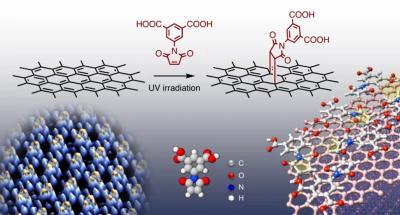An international research team, that included researchers from the Harbin Institute of Technology in China, INRS in France and more, has demonstrated a novel process to modify the structure and properties of graphene. This process relied on a chemical reaction known as photocycloaddition, that modifies the bonds between atoms using ultraviolet (UV) light.

"No other material has properties similar to graphene, yet unlike semiconductors used in electronics, it lacks a band gap. In electronics, this gap is a space in which there are no energy levels that can be occupied by electrons. Yet it is essential for interacting with light," explains Professor Federico Rosei of INRS's Ãnergie Matériaux Télécommunications Research Centre.
"The multidisciplinary group of researchers from Canada, China, Denmark, France and the United Kingdom succeeded in modifying graphene so as to create a band gap. Current research is rather fundamental but could have repercussions over the next few years in optoelectronics, such as in the fabrication of photodetectors or in the field of solar energy. These include the manufacture of high-performance photovoltaic cells for converting solar energy into electricity, or the field of nanoelectronics, for the extreme miniaturisation of devices," emphasizes Professor Rosei.
Source:
Posted: Dec 16,2020 by Roni Peleg

